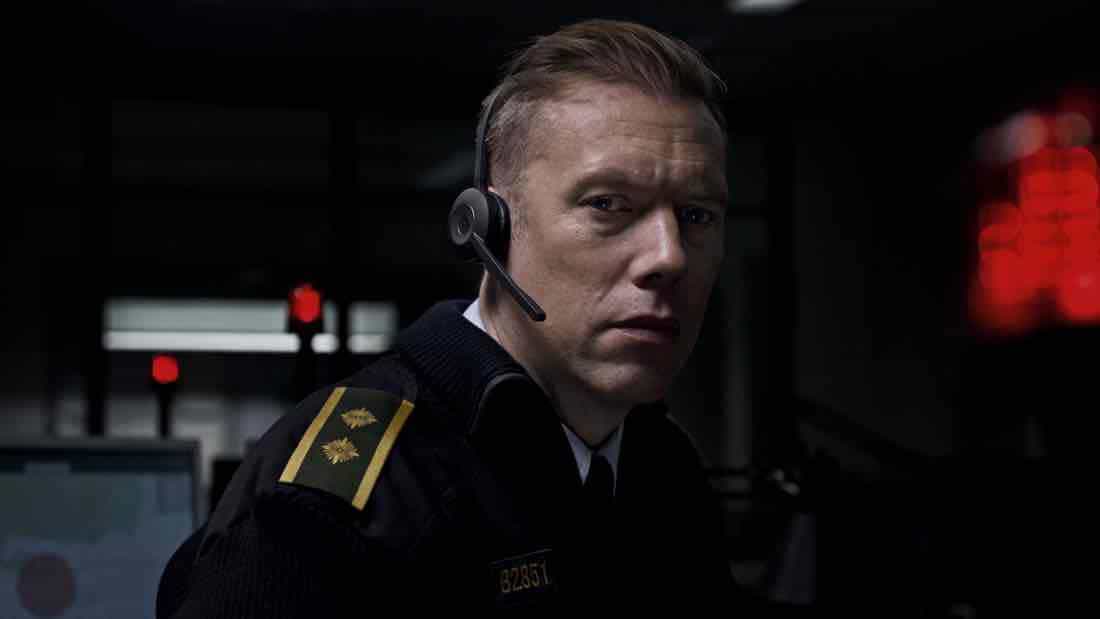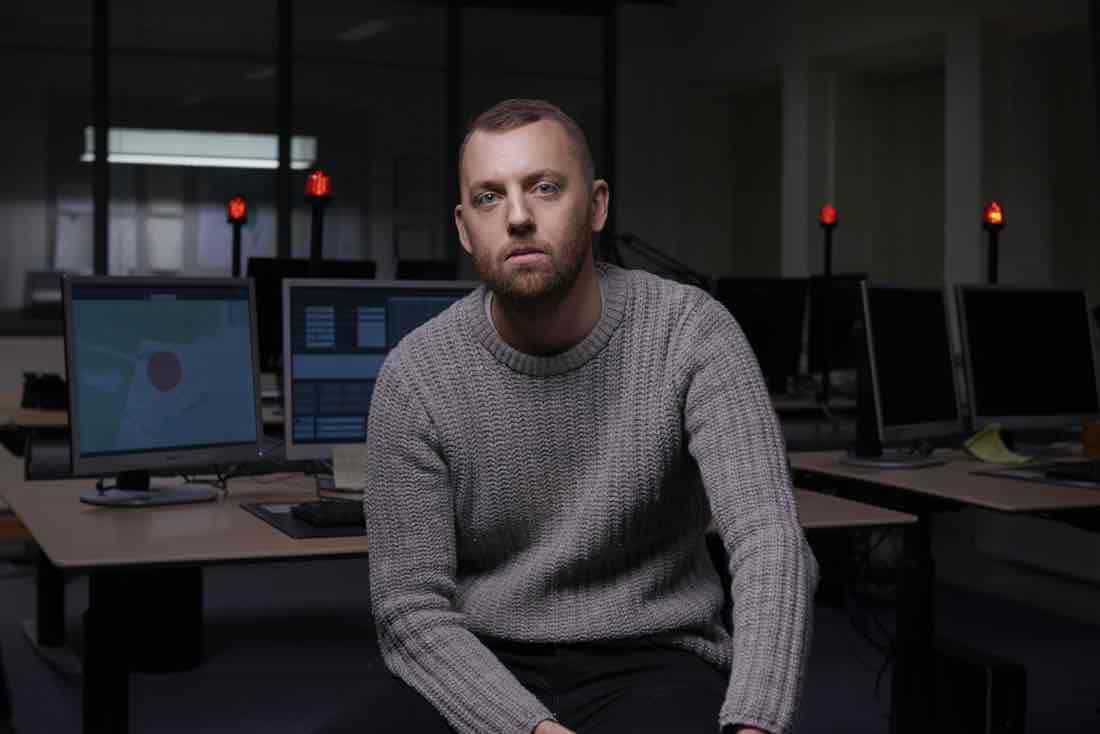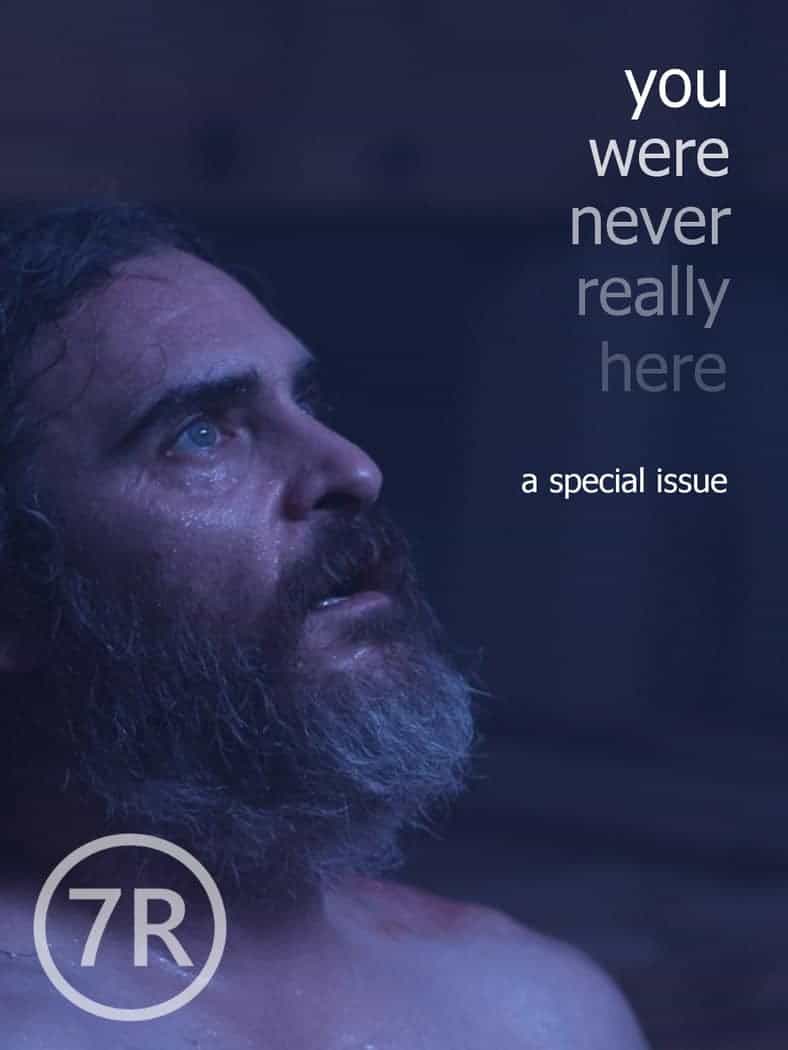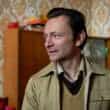Promising filmmaker Gustav Möller and breakout actor Jakob Cedergren discuss their intense thriller, The Guilty, set entirely in one location, with only one character visible during most of the film.

Set entirely inside an emergency response call centre in Copenhagen, The Guilty is a tense thriller bolstered by an intense performance from Jakob Cedergren. On Asger’s last day working at the call centre, where he was assigned as administrative punishment, he gets a phone call from a terrified woman who claims to have been kidnapped by her child’s father. Coming after weeks of built up resentment from being sat behind a desk rather than active on the ground, the event pushes the frustrated Asger to breach protocol in an attempt to help this woman — and all hell breaks loose.
Unfolding in real time, Gustav Möller’s feature debut follows Asger through this decision and its consequences. Just like the film’s hero, we are trapped at the call centre, and we share the stress of being a helpless witness — or perhaps the cause of something worse. Moller’s sound design vividly conjures a whole world outside, through what we and Asger hear on the phone.
Back at Sundance, Möller and Cedergren talked to me about their collaboration on The Guilty, explained how Möller and his co-writer, Emil Nygaard Albertsen, got the idea for the film, and described the way in which constraints of time and place led to new creative possibilities for actor and director.
Developing the story for The Guilty
7R: What research did you do — both for the script and the shoot — about how call centres work?
Gustav Möller: The idea for the film came from a YouTube clip I heard that was a real 911 call. I was both inspired by how gripping it was, but also the inner imagery that the sound provoked. That was the starting point, but that soon led me into the research along with my co-writer, Emil Nygaard Albertsen.
We went out to different dispatch centres and spent mainly night shifts there. We would meet the police officers working there and listen in on the calls they were receiving. The first thing that surprised me was that some of the police officers at the dispatch centre were there against their own will: they had been suspended and put there.
As a screenwriter, you start getting ideas. Why would a person do this? Why would a person get put in such a situation? We started coming up with a character and also began interviewing police officers who had been through the same experiences Asger has. I was really fascinated by the job description of being so close to something traumatic and violent in sound.
When you are on the phone with someone, it is a very intimate thing, especially wearing a headset. You get very close to the person, but at the same time, you are miles and miles away from that person and that violent situation. And that is also a part of their job description, to be distanced and professional. That contrast between those two things — something very intimate and violent, and something very distanced and professional — was an inspiration. How do we push a character to step away from this professional role, and what kind of person would that?
[click_to_tweet tweet=”‘The contrast between something very intimate and violent, and something very distanced and professional, was an inspiration. How do we push a character to step away from this professional role?’ -Gustav Moller” quote=”‘The contrast between something very intimate and violent, and something very distanced and professional was an inspiration. How do we push a character to step away from this professional role?’-Gustav Möller”]
Jakob Cedergren: I met a lot of people who were in the environment, and I was also at the dispatch centre and sat nights.
Preparing for the shoot
7R: I know you shot The Guilty really quickly. Did you have any prep time together?
Gustav Möller: We met in April, and we shot it in November.
Jakob Cedergren: So half a year. I was involved early because I was called to an audition where there wasn’t even a first draft. They wanted the actor early, to get involved in the last piece…
Gustav Möller: Both in order to write it to a specific actor, but also to involve him in the creative process of writing the script. So Jakob came with notes from an early stage, and we did a very rigorous analysis of the script as we were going. Also, after we had a final draft, we went through it very vigorously.
Jakob Cedergren: So there were no points where you were in doubt what was going on. We knew we were going to do this in 13 days. If there’s something in the script that you don’t really get, you’re going to have the same feeling when you are on set, and you are going to have the same discussion. To avoid this, the more you can do that prep, the better you get it to work.
[click_to_tweet tweet=”‘If there’s something in the script that you don’t really get, you’re going to have the same feeling when you are on set. The more you can do that prep, the better you get it to work.’ – Jakob Cedergren” quote=”‘If there’s something in the script that you don’t really get, you’re going to have the same feeling when you are on set. The more you can do that prep, the better you get it to work.’ – Jakob Cedergren”]
Gustav Möller: But we only talked about ‘why does he say this?’ and ‘why does he do this?’ We never talked about how I wanted his performance to be. We only had one reading of the script, which was a dry reading with all the cast. That was the only rehearsal. I wanted to keep it fresh and not get locked in a way of performing it. When we shot, I wanted this real time feel where anything could happen.
[click_to_tweet tweet=”‘We never talked about how I wanted his performance to be. I wanted to keep it fresh and not get locked in a way of performing it.’ – Gustav Moller” quote=”‘We never talked about how I wanted his performance to be. I wanted to keep it fresh and not get locked in a way of performing it.’ – Gustav Möller”]
Jakob Cedergren: And there was room for improv, as well, which was great.
Gustav Möller: Prepare for chaos.

An intense 13-day shoot
7R: What was the process for actually shooting The Guilty? What did you have to act against?
Jakob Cedergren: I had all the colleagues. They were in a room about five yards away. It’s all live. I wish I’d seen that room — people jumping around in there, while I was on the phone.
Gustav Möller: We shot the film chronologically with three cameras. We split the film up into eight sections, doing it section by section. The shortest take was five minutes, and the longest 35 minutes. I would sit in this room with the other actors who call him, or get calls from him, which was a padded, dark room where I would sit with a monitor.
I was watching all three images. It was like I was editing the film as I was watching it. Between calls, I could tell an actor, “Try to be more aggressive in this take.” I could direct Jakob through the other actors this way.
[click_to_tweet tweet=”‘Between calls, I could tell an actor, ‘Try to be more aggressive in this take.’ I could direct Jakob through the other actors this way.’ – Gustav Moller” quote=”‘Between calls, I could tell an actor, ‘Try to be more aggressive in this take.’ I could direct Jakob through the other actors this way.’ – Gustav Möller”]
Jakob Cedergren: Super fun because I got surprises all the time. All of a sudden, they were different from what they just did, and you just went along.
7R: So were you giving Jakob direction during this? Or it was all through the other actors?
Gustav Möller: On some occasions, we had a walkie-talkie in there, but I think it was very rare.
Jakob Cedergren: Very rare, but a few times. Mostly, it was nothing about intentions, but always something practical, to get a thing.
Gustav Möller: Fix your headset. That was the most common one, because of continuity.
7R: So then you would respond to what he was doing and tell the other actors…
Gustav Möller: It felt like surfing in a way — I don’t surf — but you start a take, and you get an energy from it. The half hour take was the most fun for me to shoot, hardest for him probably, but most fun for me. I felt like I was watching a movie while we were doing it, and then I could be like “I want to go this way.”
7R: During that take or in-between takes?
Gustav Möller: During. The best time to do that was in-between calls. It could be things like, “Don’t call him just yet. Let him hang in it.” Or maybe we said it should be a 30 second break, and Jakob was set to sit there and stew in it for 30 seconds, and then they’d call him straight away, and then you get a surprise reaction.
It was a very intense shoot, but I didn’t feel stressed with the 13 days. We actually went home early half of the days, because after six 30-minute takes, you have three hours in the can in three cameras — nine hours total — and he’s exhausted.
Jakob Cedergren: It felt good.

7R: In The Guilty, we hear a lot of things on the other end of the line. Were the actors creating some of those sounds during it, or were you mostly responding to their voices?
Gustav Möller: Only the very specific things that he would have to have a clear reaction to, like police car sirens, doors shutting, things like that. The actors had that in their script, so they would say it.
With all the bigger things, like people walking in the rain, the script supervisor, me, and the sound designer had gone through the whole script and had been like, “for this part, when he’s listening to the police pulling off a car, we need 25 seconds.” The script supervisor would time it while we were shooting a take, and sometimes, after a couple of takes, Jakob just knew about how long, and sometimes, we would have a cue for him.
Shooting The Guilty with three cameras almost entirely in one room
7R: You shot The Guilty with three cameras. How you were deciding how to set those up?
Gustav Möller: The main reason for the three cameras wasn’t to save time; it was for the actor. Because it was only him on screen. We did multiple setups for each block. But if we had a great performance in a scene, I wanted to be covered and to be able to edit it around it. I didn’t want it to be a situation where he would have to reproduce things.
Jakob Cedergren: Which gave me a huge freedom when it came to the physics. I didn’t have to worry. Every time you go, you go. It was great for me, except for the headset.
7R: I imagine one of the challenges of this role in The Guilty is you are mostly sitting, so you can’t get up and move. You are acting from the waist up.
Jakob Cedergren: The first thing is to find out what the physicalitys of a person in this situation is. There’s some exercises you can do for that, and then you try that sitting down. If it’s not in the body, you can tell in the voice.
[click_to_tweet tweet=”‘If it’s not in the body, you can tell in the voice.’ – Jakob Cedergren” quote=”‘If it’s not in the body, you can tell in the voice.’ – Jakob Cedergren”]
Gustav Möller: It is a dramatically nice constriction for the character, because Jakub’s character is a man who wants to act physically, who wants to be out there.
Jakob Cedergren: Yeah, he’s restrained. You rehearse what you would do physically, and then you find this is where the emotion is at, and then you sit down and do it again. You feel what the body feels like. It doesn’t necessarily show, but that was my feeling.
Editing The Guilty
7R: What was the editing process like?
Gustav Möller: We had only 13 days shooting, but we had 75 hours of material, so it was intense. The editor made the first cut while I was watching the whole material through. I had the script notes, and I watched every take. I watched the three takes next to each other, but I watched every take to make notes that this line is great here, this moment is great here. I had a system with different colours, and then every phone call in a scene, I gave it a grade from A to F and a little note. And then I would give the whole take a grade, like “this is a B+ take, This a C take”.
Jakob Cedergren: Were there any A+?
Gustav Möller: There were a lot of A+ takes.
Jakob Cedergren: Some Fs.
Gustav Möller: So after I watched the first take, I had a rigorous manual for how to…
Jakob Cedergren: Did you save these notes?
Gustav Möller: I have them.
Jakob Cedergren: Great.
Gustav Möller: Often, we used a master take for a sequence, which had the right emotional journey, and we would use the other takes to spice it up and make it unpredictable and dynamic visually. That was the first part, but the biggest part was peeling off information.
The editor is the one who writes the final draft of the film, you could say. It was very much about how little we could tell about this character and this situation while still keeping the audience intrigued and in suspense. It was a peeling off process. Chronologically, it’s exactly as in the script. We removed one phone call, and we switched the places of two phone calls. Everything else is exactly like the script.
It was about POV. When do we see the character? When do we want to be close to him? When do we want to be far and maximizing the performance? We had a lot of good material to work it. It wasn’t about creating a good performances in the editing; it was about getting a specific performance and how much do we want to restrain.
His is so controlled, and there’s something crackling within him. But we don’t often see it burst out.
7R: There are a lot of great macros of your hand, whether it’s just fidgeting or trembling. How did you go about capturing those for The Guilty?
Gustav Möller: That is something we often did towards the end of the day when people were too tired to act. We would film screens and hands and neck and things like this, and we did it in every block.
People were cracking jokes as we were doing this. I was in the room, directing Jakob’s hands, like “try to scratch it. Try to slow it. Now, dial hard, and dial again slower. Dial again.” To be honest, we used every little frame of the hand material we had, even the mistakes of him dropping the phone.
7R: Did you do whole long takes of those?
Gustav Möller: No. We did that very specifically. But also often with three cameras. We’d have three cameras set up on one hand. The operators were there; why not? It wasn’t anyone’s favourite part of the day, but it turned out to be a very good resource for the film. Obviously, also one of the only ways to cut away from the character and cutting to a close-up would be cutting to a screen, a hand, or a neck.
7R: You said some interesting things about the tension you had to create to get the voice right. Could you talk a bit more about that?
JC: The good thing in this shoot was, when you’re doing these long takes, and you have these eight blocks, you just have to get to where you have to be. For the rest, you’re surfing as you go. It was a huge gift. It was like theatre, and you can go with what happens. You work yourself up a little bit. Sometimes, it was music, and sometimes, it was just walking around.
Gustav Möller: Jakob had this little room right next to the set where he was sitting in between takes, and I would go in there if we had 10-15 minutes waiting to give him some directions. He was always listening to music. Sometimes, it was lounge music, and sometimes, it was death metal.
Jakob Cedergren: All depending.
Gustav Möller: Yeah, all depending on the mood.
[click_to_tweet tweet=”‘Jakob Cedergren was always listening to music. Sometimes, it was lounge music, and sometimes, it was death metal.’ – Gustav Moller ” quote=”‘Jakob Cedergren was always listening to music. Sometimes, it was lounge music, and sometimes, it was death metal.’ – Gustav Möller”]
Conjuring unseen worlds through sound design
7R: I’m very curious about how you approached the sound, because it was not as if you had a set where you were collecting the sound. What was the process for that?
Gustav Möller: Most of the time, you create a lot of the sound from the ground up anyways. But here, the big difference is we didn’t have a reference point, so anything was possible.
The concept is very strict, and that breeds creativity. The sound was completely open; we could do anything we wanted. It was very intense and detailed work, trying so many different things out.
We were listening so much to different types of rain. Finding the sound for the van she is kidnapped in took so much time, as well. We went out and recorded different vans, used soundbank sounds, as well. It was very detailed work with a lot of exploring in different directions.
Discover the sound design in You Were Never Really Here
Lynne Ramsay’s You Were Never Really Here also features very nuanced sound design, though it’s more targeted at getting us inside the headspace of the character than conjuring worlds we can’t see. We interviewed Sound Designer Paul Davies in our new ebook about the film.
In a normal film, if a door opens, you have a visual of a door and a house, so then you don’t need to be so specific in the sound because you have an idea if this is a creepy house or this is a nice house. But if you only have the sound of footsteps and a door opening, then the sound of the door will tell you everything about how the house looks. So it was very much about exploring the visual aspect only through sound.
I had an exact idea of how every place looks. I know how every room and every bar and every street sounds, how they look. The process with the sound designers was me trying to convey that to them or them coming up with new sounds. The unique thing about this film is it’s going to look different to everyone when they hear those sounds. But to me, it felt like it had to be true to my inner images.
You may also like our interviews with these directors
Although not every director works with as stringent constraints as Gustav Moller did in The Guilty, which is set in one location in real time, many directors have told us about the importance of constraints for making creative choices.
Dominic Cooke told us about the need to do reshoots on On Chesil Beach to grab macros of small details like the actors’ hands — so much of which turned out to be essential for the film’s storytelling.
Cristian Mungiu told us about why he likes shooting scenes in single, long takes, often with minimal camera movement. Whereas Gustav Möller had to build sound from the ground up for locations we never see, Mungiu talks about how he collects sound on location to create a rich soundscape.


